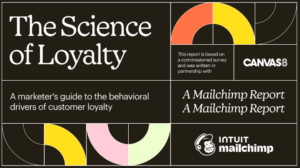By Nick Reid, Senior Vice President and Managing Director EMEA, DoubleVerify
In 2022, the ad market is forecast to grow by 35.7% – with the UK leading the charge. As we look to move out of a period of uncertainty, to a time of hope, brands have the opportunity to harness the changes and developments in the market we have seen over the last two years.
Thanks in part to many months spent at home, consumption habits have fundamentally shifted. From the growth of Connected TV (CTV) devices to the explosive impact of relatively new platforms like TikTok, consumers are discovering new ways of being informed and entertained. The world continues to evolve and, as it does, we’ll continue to see other viable platforms for advertising emerge.
While advertisers look to leverage these new channels, it’s within an environment of stronger privacy controls. The challenges of cookie depreciation and shifts in regulation remain, all of which have fundamentally changed how brands must target their audiences. Efforts to engage consumers – while remaining privacy-friendly and yet relevant should be calculated and considered. With this in mind, here are three interrelated trends brands should be aware of as they build effective and creative advertising campaigns and experiences this year.
Attention will become the new advertising currency, driving outcomes for brands
In 2022, brands will be looking for ways to incrementally measure performance in an accurate, privacy-friendly way. For that reason, attention metrics are set to become the new advertising currency.
Brands will continue to want to drive both media and business outcomes from spend. Attention metrics help them achieve this. Insights into metrics like exposure and engagement, which encompass audibility, quartile completion, screen touches, screen real estate and more, provide powerful new sets of data that can help predict an outcome – whether a brand is looking to drive awareness or conversion. As such, brands can use this data to optimise their campaigns. Likewise, brands can achieve this without tracking consumers or requiring personal information. In essence, consumer attention is essential for an ad to make an impact and measuring attention signals is becoming critical for advertisers.
Privacy regulations and the deprecation of cookies are undoubtedly accelerating this change. However, the shift to attention as the industry’s new currency isn’t only reactive but grows out of verification solutions. Advances in verification have improved transparency and measurement in turn improving the baseline for media quality. Once quality has been established, measuring attention is the next step in understanding how campaigns will perform.
The evolution of contextual
Against the backdrop of tighter privacy controls, we’ve seen a renewed interest in contextual targeting. This year, brands must reach customers at moments that matter to them without relying on behavioural tracking. And, while protective of their privacy, consumers still want to see relevant ads. Our research shows 69% of users are more likely to engage with an ad if it’s relevant to the content they are reading or viewing.
Advertisers are beginning to turn to contextual targeting solutions for privacy-safe, cookie-free targeting. In fact, research finds that 96% of advertisers are increasing contextual spend. With contextual, brands can align their ads to content that is relevant, creating an experience that’s more likely to drive action.
To best harness contextual targeting, it’s important for brands to understand the methodology behind the tech in greater detail. For example, sentiment-based targeting, as opposed to semantics-based, can lead to challenges, such as neutral content on otherwise controversial websites being marked as appropriate.
To best reach audiences, brands can instead use semantics-based targeted segments; encompassing seasonal, behavioural and dynamic categories. By using both broad and granular targeting categories to align ads to relevant content, brands will be able to increase user engagement and drive performance in 2022.
A values-based approach to advertising will become the norm
The concept of placing values at the forefront of a brand isn’t new, however today it is certainly more achievable. In 2022, brands of all kinds will wish to demonstrate a sense of awareness and responsibility to others, not just a promotion of their own brand equity.
Brands can and should explore how they can be responsible to their customers and the wider ecosystem. As part of this shift, this year we will see the move from brand safety to brand suitability, the notion of responsible investment, and adherence to ethics and beliefs that are close to brands, and ideally their target audiences.
Responsible media investing will also be a priority in 2022 and beyond. This requires brands to be able to target publishers that are committed to shared values and filter out misinformation to ensure spend doesn’t go to bad actors. Technology plays an important role here.
Moving beyond inclusion lists, which have at times been a cause for concern with publishers due to unnecessarily blocked ads, brands will harness exception lists so that they know they are continually supporting publishers they believe in. This also empowers brands to support more niche, or independent publishers who wouldn’t ordinarily receive an influx of advertising.
The road ahead
While it’s been a disruptive two years, the outlook for the advertising industry is promising. A focus on new methods of driving advertising outcomes can enable brands to be innovative and forward-thinking while enhancing privacy standards.
Engaging customers in moments that matter to them will be paramount. Creating personalised and meaningful experiences at scale and being able to measure and track the impact of them will be key. Combined with an ongoing move toward value-based advertising, the year ahead will be about building a better advertising ecosystem for us all. From times of adversity, comes change and developments, which historically have evolved to the benefit and greater good of an ecosystem. This year, we will see such changes come to fruition.







